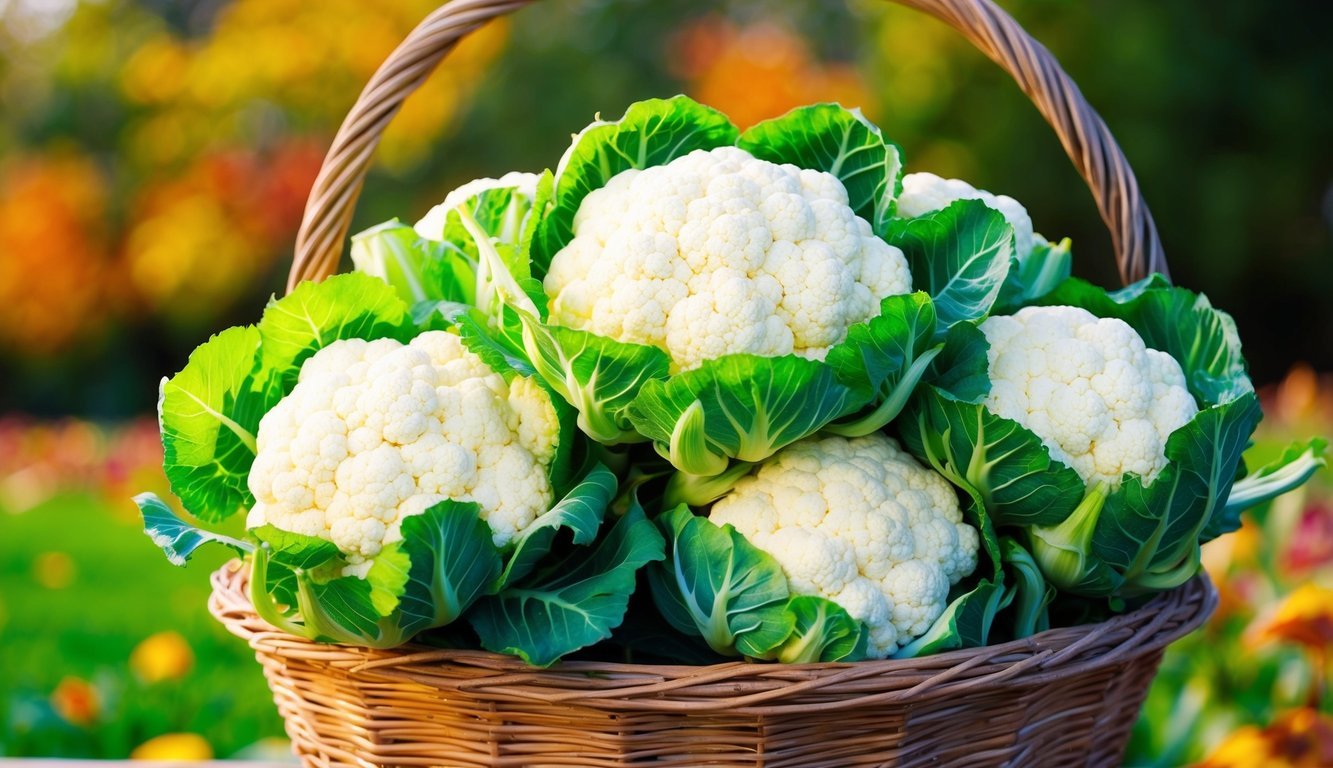
Knowing When to Harvest
Cauliflower typically takes about 50 to 80 days to reach maturity.
This timeline can vary depending on factors such as the specific type of cauliflower, climate conditions, soil quality, and available moisture.
If you planted your cauliflower in late spring, expect to start harvesting by mid to late summer.
For crops sown in midsummer, late fall is the sweet spot.
Horticulture expert Matt Mattus emphasizes the importance of checking for firm, tightly packed heads before the harvest.
If you planted for a fall crop, make sure to pick your cauliflower before it flowers or is hit by a hard frost.
Although cauliflower can tolerate light frosts, cooler temperatures often enhance its flavor.
Watch for the head’s condition, too.
According to Jennifer Broyan from Broyan’s Farm, if the underside of the head begins to spread, it’s a clear signal that harvest time is approaching.
While this doesn’t mean the vegetable is spoiled, it indicates it’s time to cut it.
How to Harvest Cauliflower
Once you spot a robust, compact head, it’s time to get to work.
Broyan recommends using a sharp knife to slice through the base of the crop.
Rather than trimming the curd too closely, leaving some surrounding leaves attached can help it stay fresh longer.
Be gentle to avoid bruising the head, as this can create brown spots and make the cauliflower more vulnerable to damage.
The option of blanching can also be considered to keep traditional cauliflower heads bright white.
This method involves gathering and tying the outer leaves over the head a few weeks before harvesting, just as the heads reach a diameter of 2 to 3 inches.
Proper Storage for Freshness
When stored correctly, cauliflower can remain fresh for weeks.
Broyan advises keeping it in a cool environment—just not freezing—to maximize its shelf life.
Be cautious with handling, as excessive movement can compromise the quality of the heads.
Mattus compares storing harvested cauliflower to taking care of cut flowers; failing to wrap it properly can result in a rubbery texture if it’s left unprotected on a refrigerator shelf.
So, treat your cauliflower with care to maintain its crisp integrity.
By following these expert-recommended guidelines, you’ll ensure that your cauliflower harvest is both plentiful and delicious, ready to be transformed into your favorite fall dishes.
Source: Marthastewart

